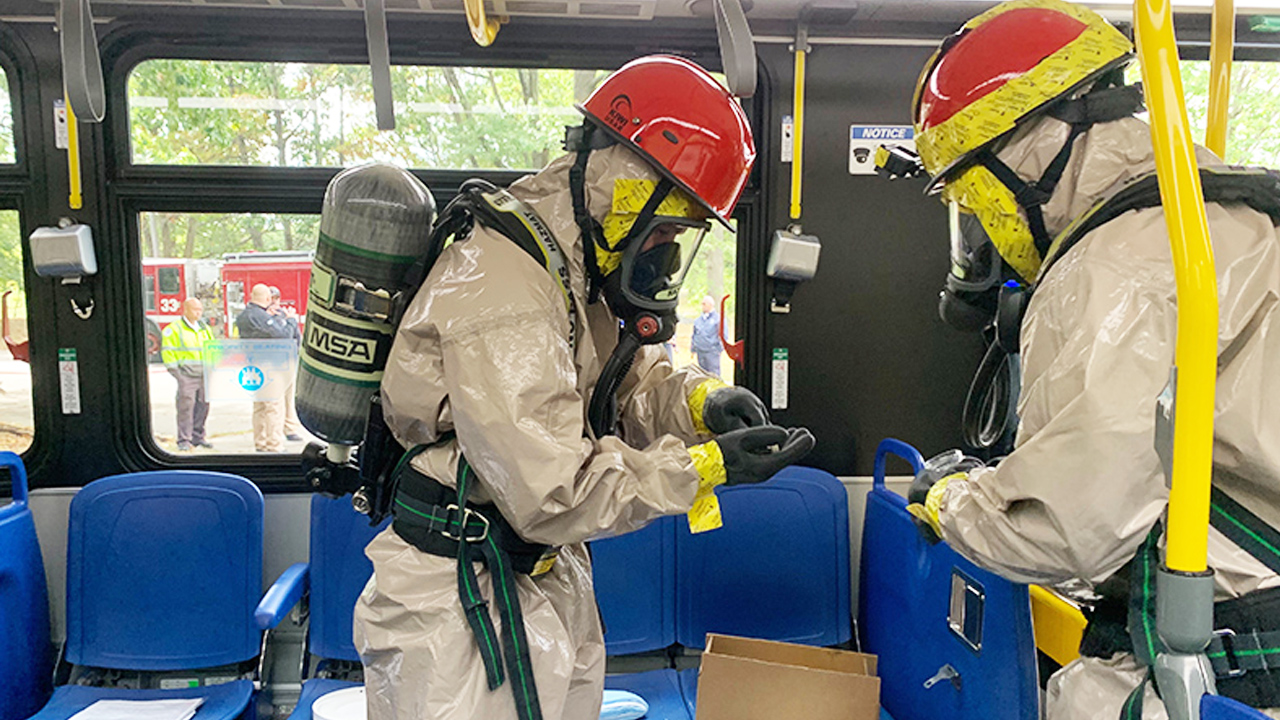IMPRINT
Virtual reality to enhance training for managing hazardous materials
Immersive Modular Preparedness Intelligent Tutor (IMPRINT)
A leaky barrel of toxic chemicals is a disaster waiting to happen. Fortunately, first responders and workers with special training know what to do. But will their training translate into the real world?
Charles River Analytics is building VR content to bridge the gap between classroom learning and field exercises for firefighters, emergency responders, and environmental and industrial workers. This new tool helps them arrive on the scene prepared to handle any scenario.
Virtual reality (VR) enhances training programs by allowing teachers and students to practice risky scenarios. With this new educational tool, instructors can deliver their existing course content in a safe, engaging, and effective way.
For example, the team is designing a 3D scene in which trainees determine what to do when they encounter a puddle with a live wire.
“We’re giving trainers the tools they need to teach people how to safely do jobs that keep our society going during emergencies.”

Dan Duggan,
XR Software Engineer and Co-Principal Investigator for IMPRINT
What is IMPRINT?
- IMPRINT creates VR modules that enhance training for hazardous waste operations and emergency response (HAZWOPER).
- Supported by a grant from the National Institute of Environmental Health Sciences
- Charles River software engineers are collaborating with the New England Consortium Health and Safety Training Center via the University of Massachusetts Lowell and the Boston Fire Department to design 3D scenes that match existing course content.
Firefighters, emergency responders, and environmental and industrial workers may encounter hazardous materials. Exposure to these materials causes health and safety risks such as chemical burns, illnesses, fires, and explosions.
When there’s a fire or chemical spill, firefighters arrive in their heavy-duty hazardous materials (HAZMAT) suits. How quickly and safely these first responders stop the fire or contain the spill depends on how well their training has prepared them. This training is known as HAZWOPER training.

Why it matters
- Exposure to hazardous materials causes health and safety risks such as chemical burns, illnesses, fires, and explosions.
- If classroom sessions aren’t engaging or comprehensive, students can be ill-prepared for field training exercises, wasting valuable resources including trainer time and equipment.
- With traditional training, students may not retain the information after earning certification, which puts themselves and others in danger when encountering hazardous environments later.
- Trainees can use IMPRINT to apply complex, dangerous procedures in a safe, controlled virtual environment. A library of VR case studies will replace traditional PowerPoint scenario-based activities.
IMPRINT is built on Charles River’s KWYN® platform, which augments skills through intelligent guidance and coaching. KWYN components can integrate with other software to make training systems more intelligent and interactive, all while reducing the development time of future training across a variety of modalities, including virtual and augmented reality (VR and AR, respectively).
Contact us to learn more about IMPRINT and our other adaptive intelligent training, and health and medical capabilities.
Research reported in this publication was supported by the National Institute of Environmental Health Sciences of the National Institutes of Health under Award Numbers 2R44ES031818, 1R43ES031818, 1R43ES035293, and 1R43OH012496. The content is solely the responsibility of the authors and does not necessarily represent the official views of the National Institutes of Health.
On the job, the KWYN® AI platform augments skills through intelligent guidance and coaching.




